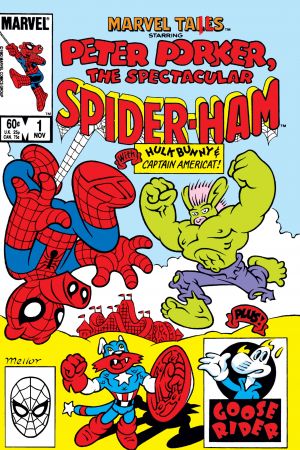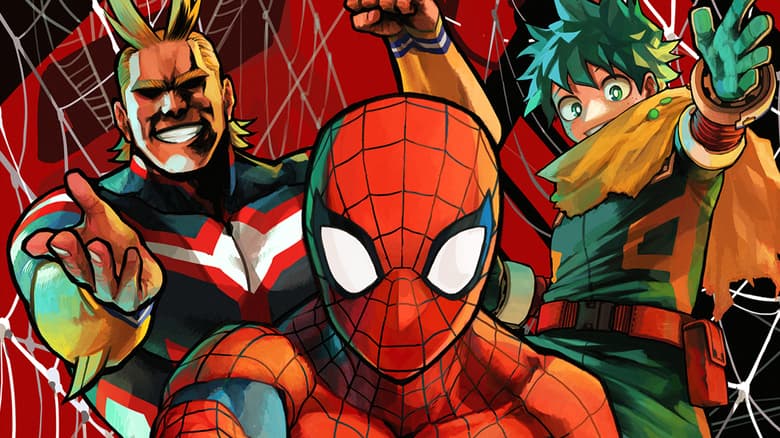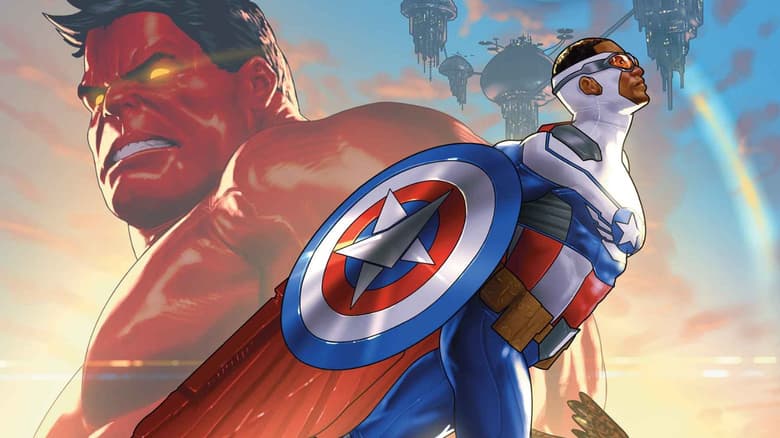Breaking into Comics with X-Force Writer Ed Brisson
Get to know Uncanny X-Men and X-Force scribe Ed Brisson with this in-depth chat!
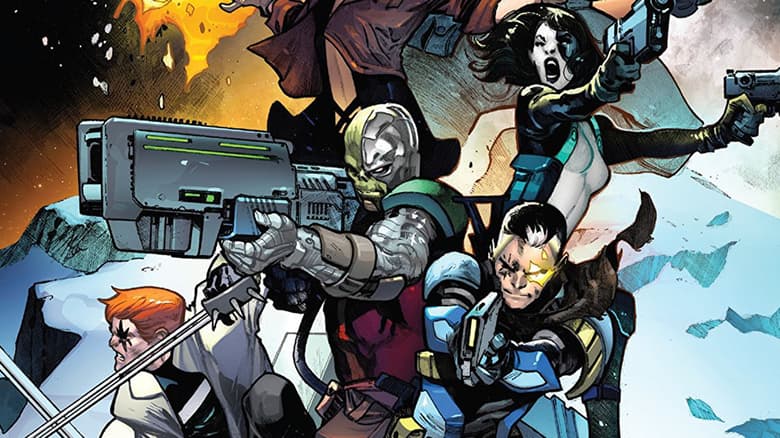
“Oh boy—hopefully not as the guy who just kept killing characters...”
That was UNCANNY X-MEN, X-FORCE, and DEAD MAN LOGAN writer Ed Brisson’s response when I asked him how he’d like to be remembered for his work on Marvel’s mighty mutants. While he may currently known for cutting short the lives of Cable and a few other fan favorites in the pages of EXTERMINATION, the Canadian storyteller strives to leave a larger legacy before he’s done.
“I really don’t know how to answer this,” he continues. “I’m just trying to write the best I can, picking up old threads and leaving some for future writers. If five, 10, 20 years from now, anyone’s talking about anything I’ve written, I’ll be thrilled.”
Ed’s path to his current role helping to shepherd the Children of the Atom contained twists and turns appropriate for a guy calling the shots on these multi-layered characters. Intending to break into comics as an artist, necessity demanded a creative shift, and ultimate landed Brisson at the House of Ideas.
I recently had a chance to chat with Ed about his own origin story, what the X-Men mean to him, and the particular joys of getting to steer the destiny of characters he loves. We began at the beginning of Brisson’s journey…
Marvel.com: How did you get started as a comic book fan? What role did comics play in your childhood?
Ed Brisson: I started reading comics at a pretty young age. My mom used to drag my brother, sister, and I to the used book store and sort of plop us in the kids book section while she browsed. The kids book section had three or four long boxes of battered comics that were only 10 cents each and I’d usually drop my entire $2 allowance on a stack of them. I remember starting out with PETER PORKER, THE SPECTACULAR SPIDER-HAM, eventually moving on to Hulk, Spider-Man, and X-Men.
As far back as I can remember, I always had stacks of comics on my nightstand and scattered across my bedroom floor.
Marvel.com: Who were some of the first writers and artists that left an impression on you?
Ed Brisson: When I was younger, I primarily followed characters and don’t really remember focusing too much on creators until I was a teen and had serious thoughts about trying to become a comic book artist. The first artist to really stand out for me was Todd McFarlane, his work was so beautiful and free and fluid, like nothing I’d ever seen before. I spent hours just getting lost in his line work.
In the late '80s, I was Spider-Man obsessive, and [McFarlane’s] stuff really [jumped out at] me. When I found out he was Canadian, it gave me this sense of hope that it might be possible for me to break into the industry too—up until then, I’d had it in my head that you had to live in New York if you wanted to work for Marvel.
As I grew and started paying attention to creative teams, I began to seek out the work of [writers] Frank Miller, David Lapham, Grant Morrison, and Neil Gaiman. Art wise, I was all about McFarlane, Erik Larsen, Rob Liefeld, Marc Silvestri, Mike Zeck, and Mark Texeira.
Marvel.com: When did you decide this might be something you wanted to do professionally?
Ed Brisson: It was always there. Growing up, I always wanted to be either a comic book artist or a [veterinarian]—or a farmer or a cop or a rapper, depending on how old I was at the time. It was always comic book artist and back-up profession.
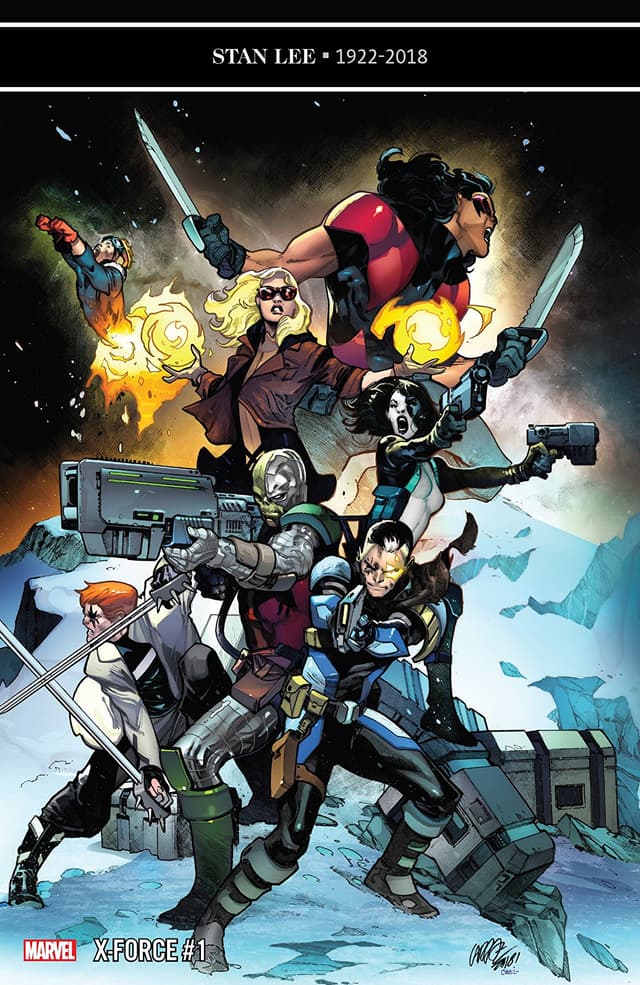
I think I sent off my first art samples when I was about 10 years old. Periodically, I’d just throw the latest stuff I’d drawn—always static action shots—in an envelope and send it off, hoping that some editor would recognize my young genius. None ever did.
Through high school, I usually spent spare blocks in the library drawing and would take extra art classes at night from time to time.
Marvel.com: Why did you end up making the switch to writing?
Ed Brisson: When I was about 18 or 19, I decided I had to get serious if I wanted to make it into comics. At the time, I was living in Kelowna, [British Columbia], Canada and started looking around locally for writers. This was when the internet was still in its infancy, so there weren’t forums and other means of connecting with writers.
Through the local comic shop, I managed to meet two aspiring writers, both of whom left a terrible impression—and were both essentially the same person in a lot of ways. Both considered themselves to be “the boss” and made it clear that I would be working on their ideas and that they would own it. They both considered the artist only to be the conduit for their voice. It was really off-putting, to be honest.
Surprising no one, they were also terrible writers. I don’t remember much about their stories, other than one ended with “it was all a dream!”
Anyway, put off by the experience, I decided that if I wanted to draw from awful scripts, I could just write my own. So, that’s what I did. Started writing scripts just so I could have something to draw from so that I could showcase my art to publishers. I never considered that writing would be the thing I’d end up doing.
This was around the mid-'90s and I discovered mini-comics—sometimes called Ashcans—around this time, and so would write and draw comics, photocopy them at our local comic shop and sell them out of my backpack and through the local comic and record shops. They used to cost me 53 cents per copy and I’d sell them for 50 cents each because I’m terrible at business. Also, I just wanted to get my work into people’s hands and figured cheaper is better.

Fast forward to 2010 and I was still nowhere close to where I wanted to be in the industry. I’d been self-publishing for 16 years and no one was interested in my work. On my birthday of that year, I sat down and took stock of everything and realized two things that I should have realized much, much sooner: I hate drawing and I love writing.
My art style skews cartoony, so I was always writing to it, but my interests normally lean to darker stories, and so I decided to hang up my pencils and focus on just writing instead. I teamed up with a couple artist friends and launched a series of short crime comics titled Murder Book.
Marvel.com: When did you meet artist Michael Walsh and what kind of impact did he have on your career?
Ed Brisson: One of the things I’ve skipped over above is that I got into lettering comics in 2006. Mostly manga and indie projects.
Sometime in 2010, Michael contacted me about lettering a pitch he was writing and drawing. I really like his art and his story telling sensibilities, and so when it came time to invoice him, I sort of offered a deal: That I’d letter a bunch of stuff for him if he’d be willing to draw a Murder Book short. Sort of a work trade, I guess.
I sent him the Murder Book stories that had already been completed. He was into it and so we hopped into our first collaboration, a story titled “Settling Up.”
The two of us really hit it off and liked working together a lot. We were hungry to break into comics, so we came up with this plan to pitch non-stop for a year. We’d come up with a pitch, I’d write up five pages and a pitch document and he would start drawing them while I started work on a new pitch. We thought that if we could keep up a decent pace, that we could probably hit them with [six to seven] pitches in the course of a year.
It was an interesting thing because it felt like we had a lot of energy and we both had this “we are going to get a book picked up within the year,” we didn’t even consider it wasn’t possible, which is crazy in retrospect.
But, we were right. Our second pitch, a crime/time-travel mash-up called Comeback got picked up and we were off to the races!
Marvel.com: So how did you eventually make it to Marvel?
Ed Brisson: As mentioned above, Mike and I hustled and kept pitching. Once Comeback was picked up, I knew I had to have a second book—Sheltered—ready to go. I’d managed to get in with a publisher and I was damned if I wasn’t staying in.
My first Marvel experience was a fluke. I was at C2E2 in 2013 and had three copies of Murder Book left over at the end of the show. Since I don’t like to take anything back with me, I’ll usually hand leftovers to anyone walking by while I pack up my table. Which is exactly what I did here.
Three months after the show, I got a call from Marvel editor Lauren Sankovitch. She was one of the people I’d handed copies of Murder Book to, not knowing she was a Marvel editor. She’d read them, liked them and hired me on to do a two-issue fill in for Nick Spencer on SECRET AVENGERS.
But, she left Marvel shortly after and it would be another two years before I had another chance to do any Marvel work: a short story in SECRET WARS: BATTLEWORLD #1. And then another year and a half after that before I got my next work, which was the BULLSEYE five-issue limited series that came out in early 2017.
There was a lot of heartbreak in there. After SECRET AVENGERS and SECRET WARS, I thought I’d blown my chance and would never get another shot. Thankfully [then-Marvel Editor-in-Chief] Axel Alonso picked up the trade collection of Murder Book, liked my work and gave me a shot with BULLSEYE.
Marvel.com: Backtracking a bit…where did you first encounter the X-Men as a fan?
Ed Brisson: Back in those used bookstore comic bin days. Though, my first real memory of reading them was during a cross-Canada road trip with my mom, dad, brother, and sister. My parents would buy me comics to keep me occupied—read: from fighting with my brother and sister—and picked up a bunch of issues of the DARK PHOENIX SAGA, which was already a few years old at the time. I think I had two or three issues from it and not in sequence. I was missing huge chunks of the story, but there was something about it that really pulled me in and made me an X-Men fan for life.
I think I first added it to my local comic shop pull-list—my first pull-list—sometime in 1986. I wish I could remember my first issue [of the original UNCANNY X-MEN] as a monthly reader, but I can’t be 100% sure. I think it was issue #201.
Marvel.com: How important was Wolverine in shaping your love for the team?
Ed Brisson: Being Canadian, almost all of the media we consume is American. TV, movies, comics, music, books, etc. So, we get a lot of American-set stories about Americans. Seeing that the most badass character on the X-Men was actually a Canadian was a big deal to me when I was a kid. It made me feel like our country mattered. So, yeah, initially I glommed onto Logan because he was a Canuck, but he’s such a rich and interesting character that he became a life-long favorite.
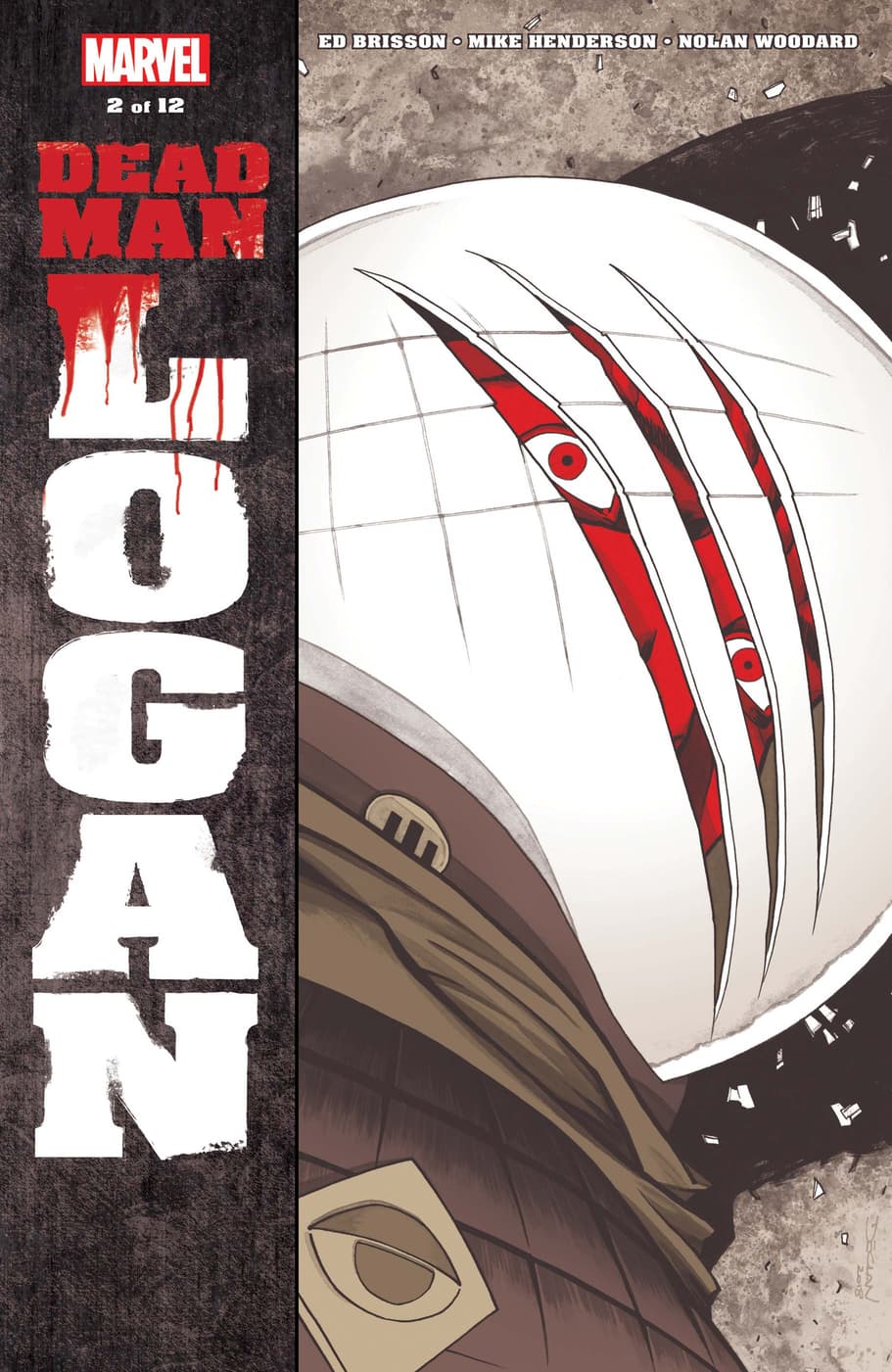
Marvel.com: Flash forward to 2018…how big a deal was it to be asked to write the X-Men and in particular the relaunch of UNCANNY X-MEN?
Ed Brisson: I don’t watch sports, so feel like a fraud using a sports analogy, but I’m going to use it anyway. I describe it like being a Yankees fan all your life, then growing up and getting the call to come pitch for the Yankees.
It’s completely surreal to be part of this thing that you’ve followed for your entire life. You’re adding to this expansive universe that you’ve admired from afar and it’s overwhelming and daunting and surreal and an honor all at once. There’s a real drive to respect the past while pushing the team into the future in new and interesting ways.
Read Ed's latest work in UNCANNY X-MEN, X-FORCE, and DEAD MAN LOGAN—on sale now!
The Hype Box
Can’t-miss news and updates from across the Marvel Universe!
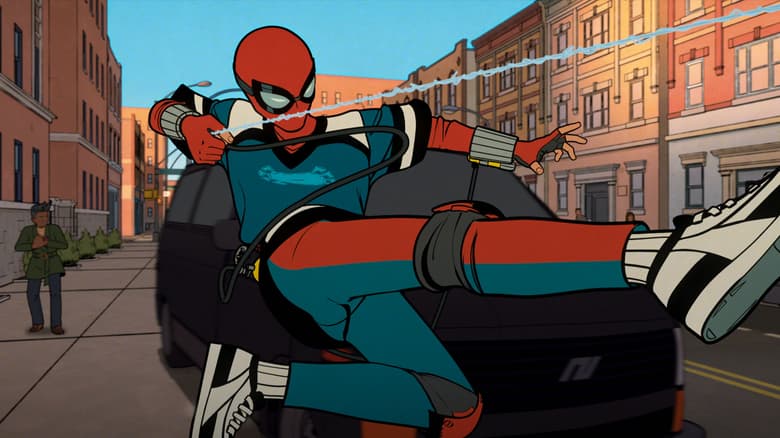
TV Shows
‘Your Friendly Neighborhood Spider-Man’ Swings into Action in New Trailer
